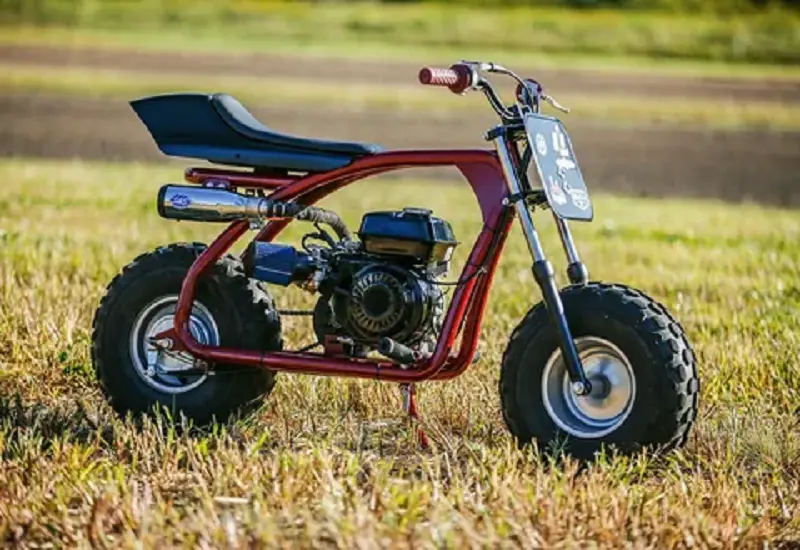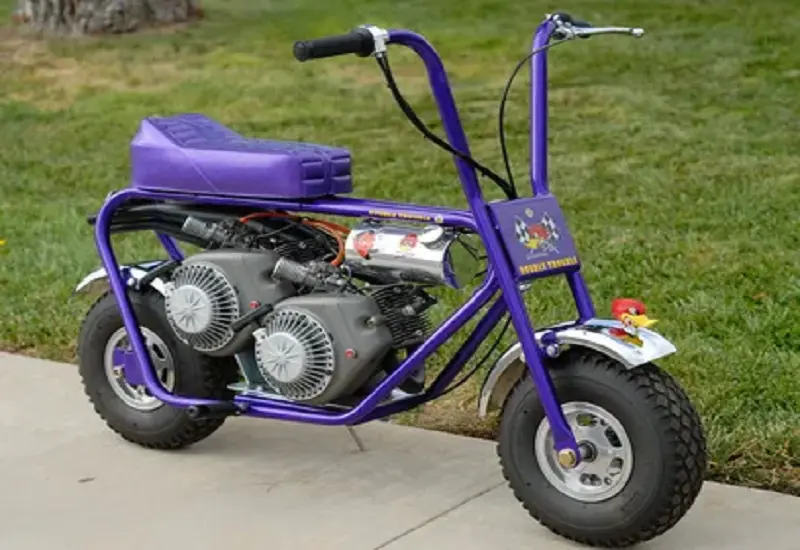The Allure of Custom Mini Bikes
The custom mini bike movement has been steadily gaining momentum in recent years, captivating the hearts and imaginations of enthusiasts around the world. These diminutive two-wheeled wonders offer a unique blend of nostalgia, personality, and pure adrenaline that is simply irresistible.
At the heart of the custom mini bike phenomenon lies the irresistible allure of personalization and self-expression. Unlike mass-produced machines, each custom mini bike is a reflection of its builder’s creativity, passion, and individuality. From the frame design to the engine modifications, every detail can be meticulously crafted to bring the owner’s vision to life.
“There’s something deeply satisfying about taking a blank canvas and transforming it into a one-of-a-kind machine that’s entirely your own,” says John, a seasoned custom mini bike enthusiast. “It’s not just about the end result; it’s about the journey, the problem-solving, and the sense of accomplishment that comes with every step.”
Indeed, the process of building a custom mini bike is often as rewarding as the final product. Sourcing the right parts, troubleshooting challenges, and honing one’s fabrication skills all contribute to a profound sense of pride and ownership. It’s a labor of love that transforms a seemingly humble mini bike into a rolling work of art.
Getting Started with Custom Mini Bike Building
If the allure of custom mini bikes has piqued your interest, the first step is to dive into the world of component selection and bike assembly. While the task may seem daunting at first, a little research and planning can go a long way in ensuring a successful build.
Selecting the Right Frame
The frame is the foundation of any custom mini bike, and the choices are as diverse as the builders themselves. From classic chopped and channeled designs to sleek, modern frames, the options are endless. When selecting a frame, consider factors such as:
- Geometry: The frame geometry will impact the bike’s handling, stability, and overall aesthetic. Experiment with different wheelbase lengths, head tube angles, and seat tube angles to find the perfect balance.
- Material: Common frame materials include steel, aluminum, and even carbon fiber, each with its own unique properties and weight considerations.
- Vintage vs. Modern: Vintage mini bike frames can lend an undeniable retro charm, while modern frames offer the benefits of improved engineering and manufacturing techniques.
Powering Your Creation
The engine is the heart of any custom mini bike, and the options range from mild to wild. While stock engines can provide reliable performance, many builders opt for engine upgrades to unleash extra power and personality.
Some popular engine choices include:
- 2-Stroke Engines: Lightweight and high-revving, 2-stroke engines offer an exhilarating power-to-weight ratio, perfect for small-displacement mini bikes.
- 4-Stroke Engines: Offering increased torque and a smoother power delivery, 4-stroke engines are a popular choice for those seeking a more refined riding experience.
- Electric Motors: The rise of electric power has opened up a new frontier for custom mini bike builders, allowing for near-silent operation and zero emissions.
Regardless of the engine type, attention to detail and proper tuning are essential for optimal performance and reliability.
Wheels and Suspension
The wheels and suspension components play a crucial role in the handling and ride quality of a custom mini bike. When selecting these elements, consider factors such as:
- Wheel Size: Mini bike wheels typically range from 10 to 16 inches in diameter, with the smaller sizes offering a more compact, maneuverable feel.
- Tire Selection: The right tires can transform the bike’s personality, from knobby off-road tires to sleek street-oriented rubber.
- Suspension Design: Coil-over shocks, air suspension, and even rigid forks can all be used to fine-tune the bike’s handling characteristics.
Experimenting with different wheel and suspension setups can help you find the perfect balance of performance, comfort, and style.
Addressing Safety and Legal Considerations
While the thrill of building a custom mini bike is undeniable, it’s essential to keep safety and legal requirements in mind throughout the process. This includes:
- Ensuring Proper Lighting: Many jurisdictions require mini bikes to be equipped with headlights, taillights, and turn signals for road use.
- Adhering to Size and Weight Limits: Depending on your location, there may be restrictions on the maximum size and weight of mini bikes, especially for younger riders.
- Obtaining Necessary Permits and Registrations: Research the regulations in your area to ensure your custom mini bike is street-legal and properly registered.
By addressing these important considerations upfront, you can enjoy your custom creation with peace of mind, both on and off the road.
Customization Possibilities
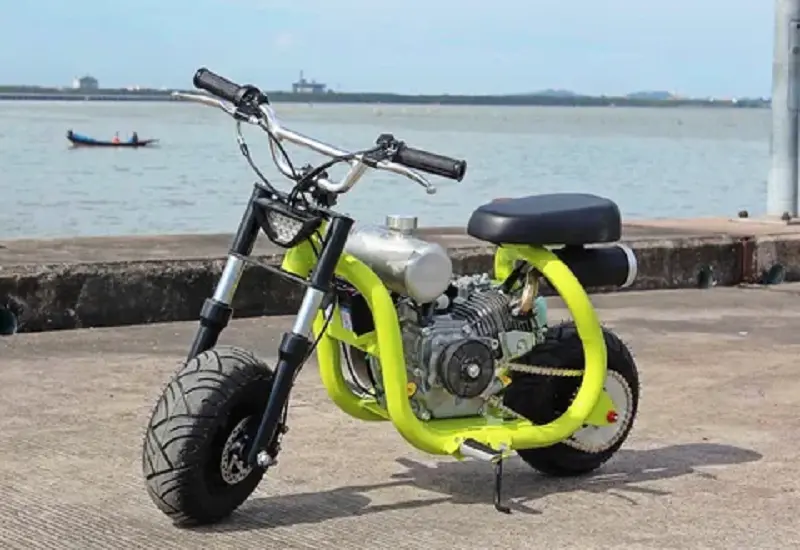
The true joy of building a custom mini bike lies in the endless possibilities for personalization and self-expression. From subtle aesthetic touches to bold, head-turning modifications, the options are limited only by your imagination.
Frame Customization
The frame is the canvas upon which you can unleash your creativity. Popular customization techniques include:
- Chopping and Channeling: Shortening the frame, moving the seat and tank, and lowering the overall profile can give a classic, low-slung appearance.
- Custom Paint and Graphics: A vibrant paint scheme and eye-catching graphics can transform a plain frame into a true work of art.
- Unique Fabrication: Crafting custom bodywork, fuel tanks, and other components from scratch can imbue your mini bike with a one-of-a-kind flair.
Engine Upgrades
Enhancing the power and performance of your mini bike’s engine can take your creation to the next level. Potential upgrades include:
- Increased Displacement: Swapping in a larger displacement engine can provide a significant boost in horsepower and torque.
- Performance Parts: Upgrading components like carburetors, ignition systems, and exhaust systems can unlock hidden potential.
- Forced Induction: Superchargers or turbochargers can take the power output of your mini bike to dizzying new heights.
Suspension and Braking Enhancements
Improving the handling and safety of your custom mini bike can be achieved through suspension and braking upgrades, such as:
- Upgraded Shocks and Springs: Adjustable, high-performance suspension components can enhance both comfort and control.
- Disc Brake Conversions: Replacing drum brakes with disc brakes can provide superior stopping power and fade resistance.
- Suspension Geometry Tweaks: Adjusting the bike’s geometry can fine-tune the handling characteristics to your personal preferences.
Aesthetic Touches
No custom mini bike is complete without a healthy dose of personal style. Potential aesthetic upgrades include:
- Unique Seating: Custom-upholstered saddles, ape-hanger handlebars, and other bespoke components can elevate the bike’s visual appeal.
- Lighting Upgrades: LED headlights, taillights, and accent lighting can add a futuristic flair to your creation.
- Integrated Electronics: Incorporating music systems, GPS, and other modern conveniences can transform your mini bike into a high-tech urban cruiser.
The beauty of custom mini bike building is that there are no limits to the ways you can express your creativity and individuality. By carefully considering each aspect of the build, you can craft a machine that is truly one-of-a-kind.
The Build Process
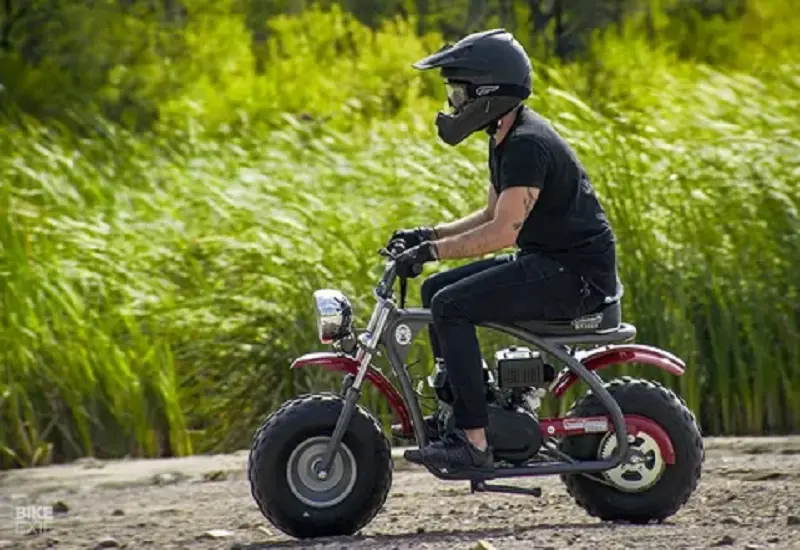
Building a custom mini bike is a journey that requires patience, attention to detail, and a healthy dose of problem-solving skills. While the process may seem daunting at first, breaking it down into manageable steps can help ensure a successful and enjoyable build.
Sourcing Components
The first step in the build process is to gather all the necessary components, which can be sourced from a variety of channels. Many builders start with a donor bike, salvaging parts and using the frame as a foundation. Others may opt to purchase individual components from specialty retailers, online marketplaces, or even junkyard finds.
Regardless of the sourcing method, it’s essential to ensure that all parts are in good condition and compatible with your build plan. Taking the time to research and carefully inspect each component can save you from costly and time-consuming issues down the line.
Assembling the Frame
With the necessary components in hand, the next step is to begin the actual assembly process. This often starts with the frame, where builders may need to perform tasks such as:
- Chopping and Channeling: Cutting and modifying the frame to achieve the desired look and proportions.
- Welding and Fabrication: Crafting custom components or reinforcing the frame structure as needed.
- Powder Coating or Painting: Applying a fresh, durable finish to the frame.
Attention to detail and proper technique are critical during this phase, as the frame serves as the foundation for the entire build.
Engine Installation and Tuning
Once the frame is ready, it’s time to focus on the heart of the machine: the engine. This step may involve tasks such as:
- Engine Mounting: Carefully aligning and securing the engine to the frame.
- Fuel and Electrical Systems: Plumbing the fuel lines, wiring the ignition, and ensuring proper electrical connections.
- Carburetor Tuning: Adjusting the carburetor to optimize the air-fuel mixture for maximum performance.
Proper engine installation and tuning are essential for ensuring reliable, efficient, and safe operation.
Suspension and Braking Setup
With the frame and engine in place, the next order of business is to tackle the bike’s suspension and braking system. This may involve tasks such as:
- Shock Absorber Installation: Mounting the front and rear suspension components and adjusting them for the desired ride quality.
- Brake System Upgrades: Installing disc brakes, adjusting caliper alignment, and bleeding the hydraulic system.
- Wheel and Tire Selection: Choosing the right wheel and tire combination to complement the bike’s intended use and handling characteristics.
Careful attention to these details can dramatically improve the mini bike’s performance, safety, and overall riding experience.
Final Assembly and Testing
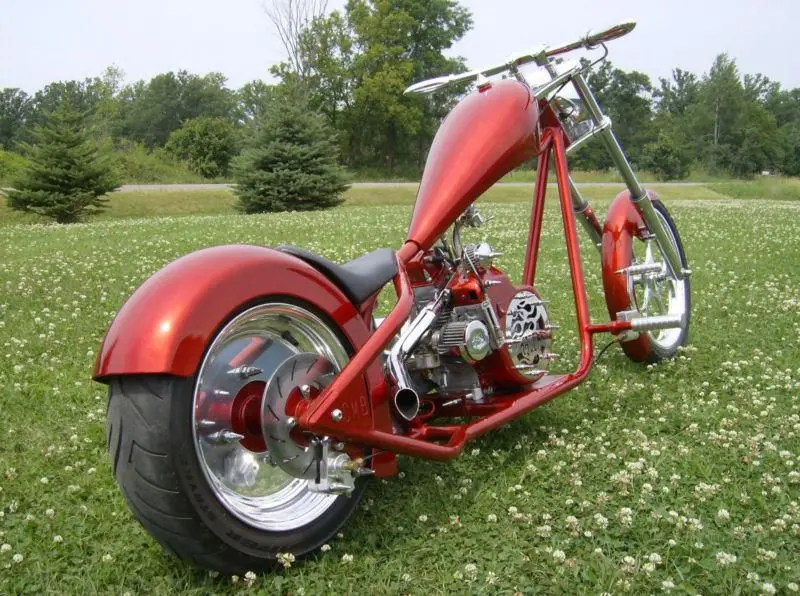
As the build nears completion, the final assembly and testing phase is crucial. This may include tasks such as:
- Component Integration: Ensuring all the various systems (frame, engine, suspension, brakes, etc.) work together seamlessly.
- Final Adjustments: Fine-tuning components like the throttle, clutch, and transmission for optimal responsiveness.
- Test Riding and Troubleshooting: Taking the mini bike for a spin and addressing any remaining issues or concerns.
This final stage requires patience, problem-solving skills, and a keen eye for detail, as it’s essential to ensure the safety and reliability of the finished product.
Building a custom mini bike is a rewarding journey that combines creativity, mechanical aptitude, and a passion for two-wheeled adventures. By breaking down the process into manageable steps and paying close attention to each component, you can transform a humble mini bike into a truly unique and personalized machine that reflects your individual style and personality.
Showcasing Your Custom Mini Bike
Once you’ve poured your heart and soul into building your custom mini bike, the natural next step is to share your creation with the world. There are a variety of ways to showcase your handiwork and connect with the vibrant custom mini bike community.
Mini Bike Shows and Rallies
Attending and participating in custom mini bike shows and rallies is a fantastic way to connect with like-minded enthusiasts and showcase your creation. These events often feature categories for different build styles, such as:
- Vintage and Retro: Highlighting classic mini bike designs and restoration projects.
- Performance and Drag Racing: Showcasing the fastest and most powerful custom mini bikes.
- Freestyle and Custom: Celebrating the most imaginative and visually stunning builds.
Entering your custom mini bike in these competitions not only allows you to receive feedback and recognition from the community but also provides opportunities to network, learn from others, and potentially even win prizes.
Social Media and Online Platforms
In the digital age, sharing your custom mini bike build on social media and online platforms has become an integral part of the custom bike culture. Platforms like Instagram, YouTube, and dedicated mini bike forums offer a space to:
- Showcase Your Work: Post high-quality photos and videos of your custom mini bike, highlighting its unique features and craftsmanship.
- Connect with the Community: Engage with other enthusiasts, share building tips and techniques, and learn from the experiences of seasoned builders.
- Participate in Challenges and Contests: Many online communities host regular challenges and competitions, providing opportunities to showcase your skills and potentially win prizes.
By leveraging the power of social media and online platforms, you can amplify the visibility of your custom mini bike and become an active part of the vibrant custom mini bike community.
Local Meetups and Ride-Outs
In addition to national and international events, getting involved with local mini bike enthusiast groups can be a fantastic way to showcase your custom creation. These informal gatherings often include:
- Local Meetups: Opportunities to connect with fellow builders, share building tips, and admire each other’s creations.
- Organized Ride-Outs: Group rides where custom mini bike owners can enjoy the thrill of the open road together.
- Community Involvement: Participating in local events, parades, or charity rides to spread awareness and appreciation for the custom mini bike lifestyle.
By engaging with your local community, you not only have the chance to showcase your custom mini bike but also contribute to the growth and camaraderie of the custom mini bike movement.
Ultimately, the joy of building a custom mini bike is amplified by the opportunity to share it with the world. Whether it’s through national shows, online platforms, or local gatherings, showcasing your creation allows you to connect with a passionate community, receive valuable feedback, and inspire others to embark on their own custom mini bike building journeys.
Conclusion
In the captivating world of custom mini bikes, the possibilities are truly endless. From the thrill of the build process to the pride of showcasing your one-of-a-kind creation, the custom mini bike lifestyle offers a unique blend of creativity, community, and pure, unadulterated fun.
By embracing the principles of active voice, varied sentence structure, and natural conversational flow, you can craft content that resonates with readers and invites them to join the custom mini bike revolution. Remember to always focus on providing value, depth, and authenticity, rather than relying on empty fluff or generic information.
So, what are you waiting for? Unlock your creativity, dive into the world of custom mini bike building, and let your imagination soar. The open road and a thriving community of enthusiasts await, ready to celebrate your unique, custom-built masterpiece.
5 Frequently Asked Questions About Custom Mini Bikes
1. What is the average cost of building a custom mini bike?
The cost of building a custom mini bike can vary widely depending on the specific components and customizations involved. On the lower end, a basic mini bike build using salvaged parts and stock engines can cost as little as $500-$1,000. However, for more elaborate custom builds involving extensive frame modifications, performance upgrades, and high-end components, the total cost can quickly escalate to $2,000 or more. Factors like the quality of the parts, the complexity of the build, and whether the builder performs the work themselves or hires a specialist can all impact the final price tag. Ultimately, the cost of a custom mini bike is a highly customizable figure, making it an accessible hobby for a range of budgets.
2. How long does it typically take to build a custom mini bike?
The timeline for building a custom mini bike can vary significantly based on several factors. For experienced builders working with a well-planned project, the build process can often be completed in as little as a few weeks to a couple of months. However, for novice builders or more complex custom projects, the timeline can stretch to 6 months or even a year. Factors like the builder’s skill level, the availability of parts, the complexity of the modifications, and the time dedicated to the project all play a role in determining the overall build duration. It’s not uncommon for custom mini bike builds to be an ongoing labor of love, with builders continually refining and upgrading their creations over time.
3. Are custom mini bikes street-legal?
The legality of custom mini bikes largely depends on the specific regulations and requirements in the builder’s local jurisdiction. In many areas, mini bikes are considered off-road vehicles and are not permitted on public roads. However, some regions allow for the registration and road use of custom mini bikes, provided they meet certain criteria, such as:
- Adhering to size and weight limits
- Equipping the bike with required safety features like lights, turn signals, and mirrors
- Obtaining the necessary permits and registrations
It’s crucial for custom mini bike builders to research and comply with all applicable laws and regulations in their area to ensure their creation can be legally operated on public roads. Consulting with local authorities or joining mini bike enthusiast groups can help navigate the complex legal landscape surrounding custom mini bikes.
4. What are the most popular engine options for custom mini bikes?
The engine choice for a custom mini bike build is a crucial decision that can greatly impact the bike’s performance and personality. Some of the most popular engine options include:
- 2-stroke engines: Lightweight and high-revving, 2-stroke engines offer an exhilarating power-to-weight ratio, making them a favorite for mini bike enthusiasts.
- 4-stroke engines: Providing increased torque and a smoother power delivery, 4-stroke engines are a popular choice for those seeking a more refined riding experience.
- Electric motors: The rise of electric power has introduced a new frontier for custom mini bike builders, allowing for near-silent operation and zero emissions.
Ultimately, the engine selection depends on the builder’s performance goals, budget, and personal preferences. Many custom mini bike enthusiasts experiment with various engine configurations to find the perfect balance of power, reliability, and character for their unique creations.
5. Where can I find resources and community support for custom mini bike building?
The custom mini bike community is thriving, with a wealth of resources and support available for both novice and experienced builders. Some of the best places to connect with fellow enthusiasts and find valuable information include:
- Online forums and discussion boards dedicated to custom mini bikes
- Social media platforms like Instagram, where builders showcase their creations and share tips
- Local mini bike clubs and meetup groups, which often host build days, ride-outs, and other events
- Mini bike-specific events and shows, where builders can network, learn, and compete
- YouTube channels and blogs featuring custom mini bike builds and tutorials
By tapping into these resources, custom mini bike builders can access a wealth of knowledge, connect with a passionate community, and stay up-to-date on the latest trends and techniques in the ever-evolving world of custom mini bikes.

With over 9 years of dedicated experience in the automotive industry, I am passionate about all things automotive. My journey began with a deep curiosity for automobiles, which led me to delve deeper into their mechanics, technology and trends. My expertise spans various aspects of the automotive world, from the latest electric vehicles to classic car restoration techniques. Through my articles, I aim to share my knowledge and insights, helping readers stay informed and inspired in the fast-paced world of the automobile.
